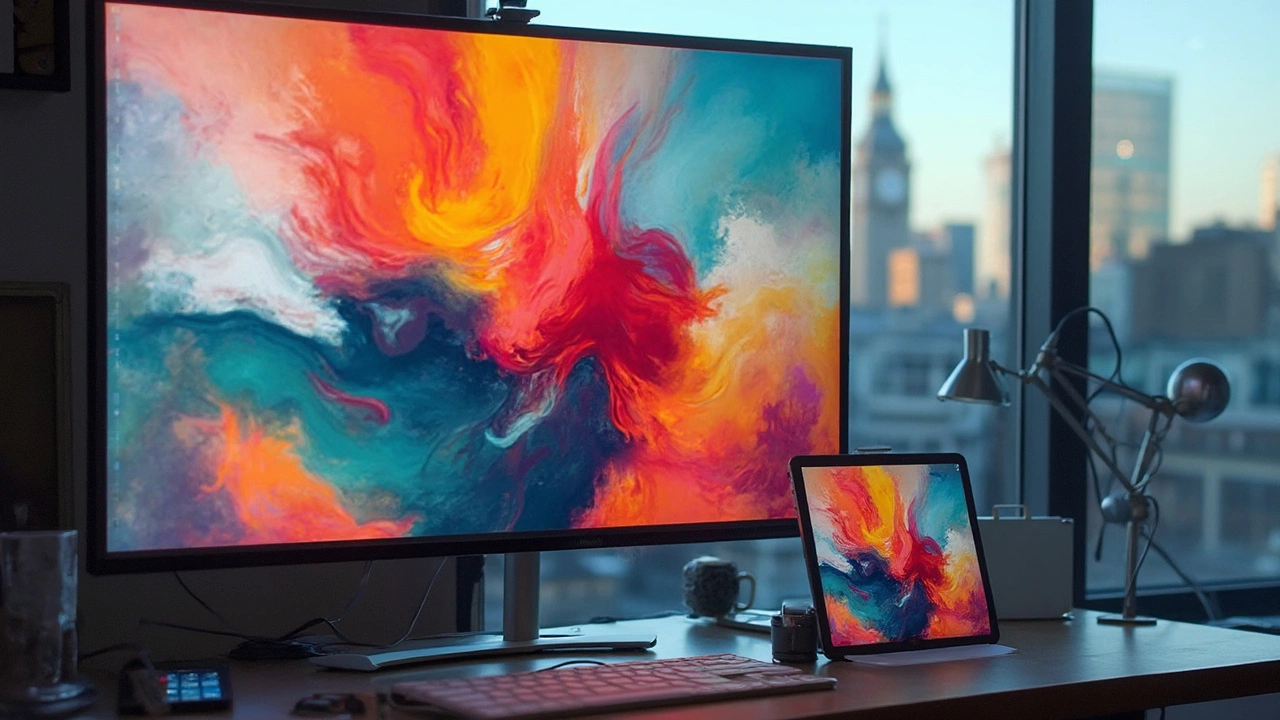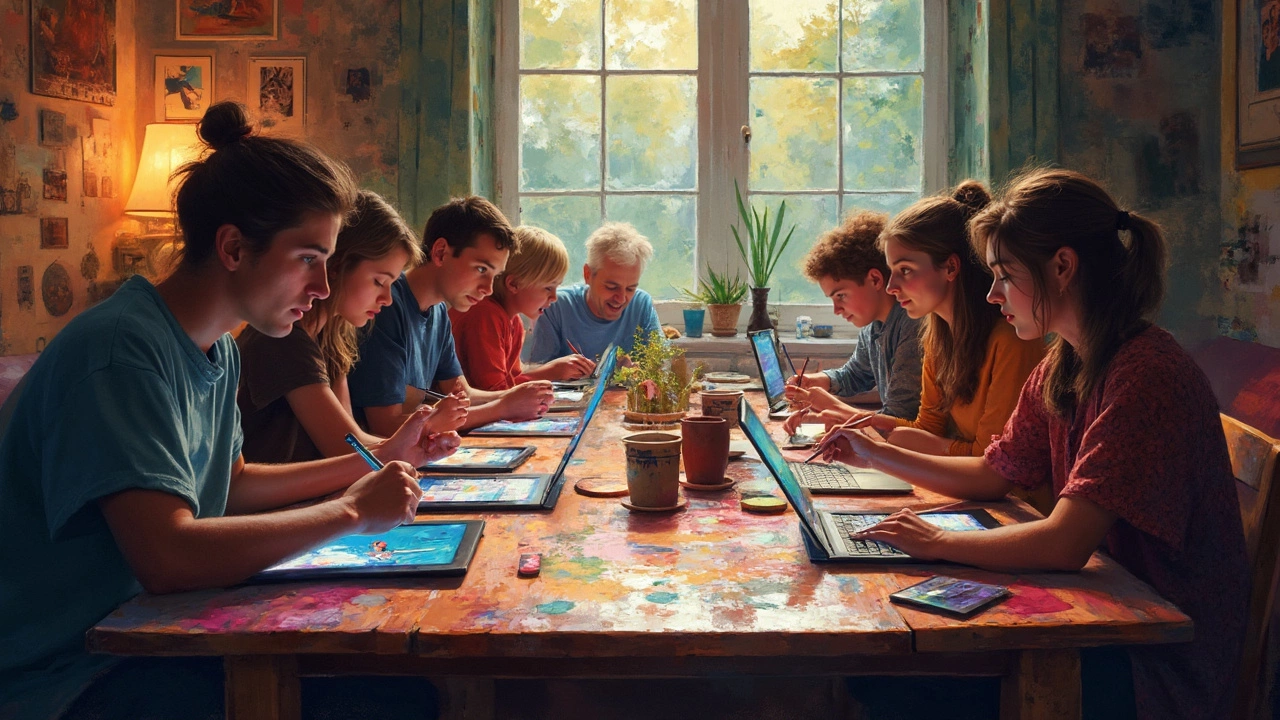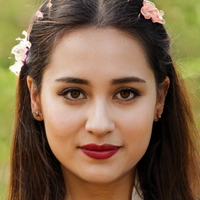Picking a digital art program isn’t just about what everyone else uses—it’s about what feels right for you. Whether you want to doodle on your iPad before bed or design posters for gigs, using the right software makes everything easier. The wrong one can turn your creative time into a headache full of technical issues and clunky menus. That’s why it pays to know your options up front.
Most people immediately think of Photoshop, but guess what? That’s not your only choice. Even some big-name comic artists prefer drawing on iPads with Procreate because it’s a breeze to use and costs less in the long run. And if you’re broke or just testing the waters, you’ll be happy to hear there are quality free options that won’t clutter your computer with ads or weird toolbars.
- Why the Right Program Matters
- Top Picks for Beginners
- Popular Tools for Pros
- Best Free Options
- Must-Know Features
- Tips for Getting Started
Why the Right Program Matters
Choosing the right program for digital art isn’t just about making cool pictures. It affects how fast you learn, how easy it feels to create, and even what kind of art you can produce. A pro-level program like Photoshop throws hundreds of tools at you, but if you only need to sketch or ink, you might end up confused and overwhelmed. On the flip side, if you’re chasing high-end effects or printing big banners, using simple drawing apps can leave you banging your head on a wall.
Your computer or tablet power matters too. Some drawing programs eat up memory and slow everything to a crawl. Others save your work constantly, so you never lose hours of effort to a random crash—Procreate and Clip Studio Paint are famous for their auto-save, so you don’t have to worry about that risky “power-off” moment.
What about price? Not everyone wants a monthly bill. Procreate is a one-time $12.99 (for iPad), while Photoshop asks for a subscription that adds up over time. Free software like Krita gives you solid tools without any wallet pain, but if you need slick features like advanced animation or 3D, it might fall short.
- Compatibility: Some software is made just for certain devices. Procreate only works on iPads. Krita and Photoshop are cross-platform, so you can use them on Mac or Windows.
- Learning curve: Programs like Procreate and Ibis Paint X have simple menus—perfect if you hate manuals. Photoshop can take weeks to really get rolling.
- Community & support: Popular programs have tons of YouTube guides, forums, and free brushes shared by fans. Smaller or newer apps might not have that back-up.
One fun fact: A 2023 survey by ArtStation showed that over 60% of digital artists use more than one program. So, it’s totally normal to jump around based on the project—or even combine tools for the best results.
Top Picks for Beginners
Feeling lost about where to start with digital art? The options can get overwhelming fast, but some programs are way friendlier to beginners than others. Here are the tried-and-true favorites people actually stick with past the first week.
- Procreate – If you have an iPad, this one’s a no-brainer. The interface is simple, there’s almost no learning curve, and the brushes look and feel shockingly close to real pencils and paint. It’s a one-time purchase (usually around $13) and updates are free. Pro tip: The official YouTube channel has tons of bite-sized lessons that walk you through the basics in less than ten minutes.
- Krita – It’s totally free and open-source, which means you don’t have to pay a dime or worry about annoying ads. Krita runs on Windows, Mac, and Linux, and it’s popular for its clean interface and awesome brush engine. It was designed with painting and illustration in mind, so you’re not digging for art tools hidden under a million menus.
- Paint Tool SAI – This program is a staple for tons of manga and anime artists, especially newer ones. Simple layers, smooth lines, and lag-free performance even on older laptops make it a fantastic pick. Just remember: SAI is Windows-only and you do need to buy a license after the free trial.
- Adobe Fresco – It’s aimed at people totally new to drawing programs. Think of it as a more playful, less cluttered sibling to Photoshop. The free version comes with plenty of brushes and tools, and it works great with touchscreens and styluses.
To help you compare, here’s a quick breakdown:
| Program | Platform | Price | Main Perks |
|---|---|---|---|
| Procreate | iPad | $13 (one-time) | Beginner-friendly, tons of tutorials |
| Krita | Win/Mac/Linux | Free | Open-source, feature-rich |
| Paint Tool SAI | Windows | $50 (one-time) | Lag-free, simple interface |
| Adobe Fresco | Win/iPad | Free/$ (paid version) | Great for touch, easy layout |
If you’re not sure which one to try first, go with the one that fits your device and budget. You really can’t go wrong with any of these for learning the basics of digital art. Start simple, have fun, and don’t stress about having the fanciest tools.
Popular Tools for Pros
If you’re eyeing the programs that digital artists use in studios and for big client jobs, the usual suspects are Photoshop, Clip Studio Paint, and sometimes Corel Painter. These tools don't just look cool—they’re packed with features that speed up workflow and handle big, complex projects without crashing your system.
Adobe Photoshop is still the gold standard for many professional illustrators, comic creators, and concept artists. It’s super reliable, and the brush engine can do everything from crisp comic lines to rich digital paintings. One reason people stick with Photoshop? Compatibility. Clients and print shops everywhere know how to handle .PSD files, so you avoid nasty surprises when your work is sent out for printing or collaboration.
- Photoshop has real support from major companies, weekly updates, and easy access to millions of brushes online.
- It works on Windows and Mac, but there’s also a cut-down mobile version called Photoshop for iPad if you’re often on the go.
- The main reason some artists look elsewhere: it’s subscription-only now. For some, monthly fees can add up quick.
Next up: Clip Studio Paint. This one has exploded in the manga and comic book crowd because of its killer pen stabilization, panel tools, and endless screentone textures. Unlike Photoshop, you can buy a one-time license—or you can go subscription if you want updates and cloud features.
- One standout fact: According to its parent company, more than 8 million artists were using Clip Studio Paint as of 2024.
- It supports both raster and vector layers, meaning you can scale lines without them turning fuzzy.
- If you make comics, this is the main pro option you’ll find talked about online.
Corel Painter deserves a mention, especially if you want your digital work to feel like traditional oils or watercolors. Its brushes bleed and mix colors in ways that feel very believable. But honestly, it’s a bit pricey and not as streamlined as the other two for fast, layer-heavy work.
There’s also Procreate (yes, even some pros use it), especially for quick concept work or when traveling. But for big commercial projects, most still stick with one of the desktop digital art programs with all the export options and file compatibility you’ll ever need.

Best Free Options
If you want to get into digital art without spending a dime, you’re in luck. There are a handful of solid programs out there that won’t ask for your credit card details, and some are surprisingly packed with features you’d expect from paid software.
Let’s talk about Krita first. It’s open-source, which just means it’s built by a passionate community who actually use the program. Krita shines for digital painting, concept art, and even comics, giving you advanced brushes, cool layer controls, and some animation tools if you’re feeling fancy. Lots of art students and hobbyists rave about how close it feels to Photoshop, but without the monthly bill.
If you’re into illustration or digital manga, FireAlpaca is worth a look too. It’s lightweight, so it runs well on older computers, and its interface is super easy to get into. Plus, it has time-saving tools: symmetrical drawing, perspective grids, and even comic templates.
For those who want a classic feel, check out MediBang Paint. It’s built for comic artists, supports cloud saving to switch from desktop to mobile, and lets you use hundreds of free brushes. The community resources and tutorials make the learning curve way easier, especially for beginners.
Here’s a quick comparison of the top free drawing programs for digital art:
| Program | Main Strength | Platforms |
|---|---|---|
| Krita | Painting & illustration | Windows, Mac, Linux |
| FireAlpaca | Manga/comic art | Windows, Mac |
| MediBang Paint | Cloud & comic features | Windows, Mac, Android, iOS |
If you just want to try digital art on a Chromebook or in your browser, take a peek at Sketchpad and Pixilart. Nothing to install—just open a tab and start doodling.
The bottom line? Don’t buy art software before you try out these free programs. You might find one that checks all your boxes, and your wallet won’t even notice.
Must-Know Features
If you want to get serious about digital art, you’ll want to look beyond splashy logos and actually compare the features under the hood. What makes one drawing program way better for your style or workflow? Let’s break down the core features that really matter when you’re choosing your next art software.
- Layers: Layers let you draw and tweak without screwing up your whole piece. Programs like Photoshop and Procreate make this super easy, letting you move or hide stuff without the fuss.
- Brush Customization: Forget cookie-cutter brushes. Good programs let you make your own or download endless packs. Pro tip: Procreate’s brush engine is one of the simplest around, while Photoshop’s gives you scary-deep control.
- Stabilization: Shaky hands? Line smoothing or stabilization helps keep your lines steady, so your art looks sharp (not wobbly). Krita and Clip Studio Paint really shine here.
- Blending and Smudging: If you love painting, you want nice blending tools. Krita and Corel Painter both feel close to smudging real paint. In Photoshop, the Mixer Brush gets close enough for most people.
- Selection Tools: Clean edges look pro, and the best art software has easy select, transform, and magic wand tools. Adobe’s tools are fast but Procreate has caught up big time in recent updates.
- File Compatibility: Want to export to PSD or work with other people? Not every program plays nice with every file type. Photoshop is great for this, but free apps like Medibang support a ton of formats too.
- Undo/Redo Limits: It sounds simple, but some free apps only let you undo a handful of times. GIMP is known for this quirk—compared to others that give you hundreds of undos.
Here’s a quick comparison of some of the top art software when it comes to these features:
| Program | Custom Brushes | Best for Layers | Line Smoothing | Blending |
|---|---|---|---|---|
| Procreate | Yes | Very Good | Medium | Good |
| Photoshop | Extensive | Excellent | Medium | Good |
| Krita | Yes | Good | Excellent | Excellent |
| Clip Studio Paint | Yes | Excellent | Excellent | Very Good |
One tip: don’t get caught up thinking you need every feature right away. Focus on what you honestly use. If you mainly sketch, stabilization and simple layers matter more than massive brush libraries. But if you’re painting detailed scenes, advanced blending and custom brushes can be game-changers.
Trying out a program’s free trial is a smart move. You’ll see pretty quick if their features actually help or just get in the way.
Tips for Getting Started
Diving into digital art feels overwhelming when you open up a new program and see a hundred buttons. You’re not alone—there’s a learning curve, but you can shrink it with a few handy tips.
First, pick one art software and stick with it for a while. If you bounce between apps, you’ll spend more time figuring out shortcuts than actually drawing. Start simple: even pros like Loish recommend focusing on the basics until you’re comfortable. As she puts it,
“You don’t need fancy brushes or a long list of features to make something great. Play around, get comfy with the tools, and focus on what you love to draw.”
Get used to the layout. Most drawing programs share tools—there’s always a brush, eraser, color picker, and some version of layers. Click around, mess up, undo—it’s all part of the learning.
Try following a step-by-step tutorial. Procreate’s YouTube channel has beginner guides that are way more helpful than wading through a thick manual. For Photoshop, look up “beginner digital painting” tutorials with real-time commentary.
Check out this quick list for getting started right away:
- Pick a free or trial version to learn risk-free before buying.
- Use default brushes until you build confidence.
- Learn basic keyboard shortcuts—like undo, zoom, and switch tools—right away. They speed things up.
- Save your work often, and use different files for each experiment. Accidents happen!
- Join online art communities. Reddit and Discord have tons of support and honest feedback.
You might wonder if you need a fancy tablet. Not really. Phones or entry-level tablets work if you’re just starting. In fact, Wacom’s lower-end models and iPads are used by thousands of artists every day—not just beginners.
People usually pick up basics faster than they think, especially if they dedicate 20 minutes a day. A small study done by Skillshare users in 2024 showed beginners who practiced daily improved their speed at using digital art tools by 37% in a month.
| Tool | Beginner Learning Curve |
|---|---|
| Procreate | Short, very beginner-friendly |
| Photoshop | Longer, more features to learn |
| Clip Studio Paint | Medium, good for comics and illustration |
| Krita | Short, free and flexible |
The biggest trick? Don’t stress perfection. Worse art is better than no art, and messing up is just proof you’re learning. Stick with it and your digital sketches will start to feel like second nature.

